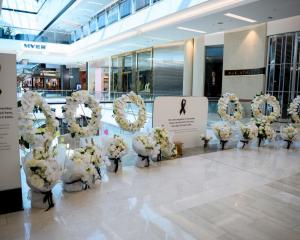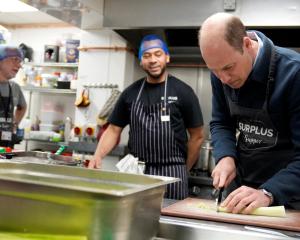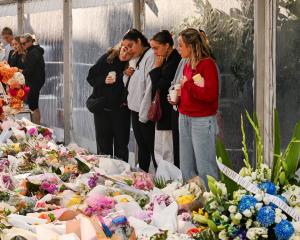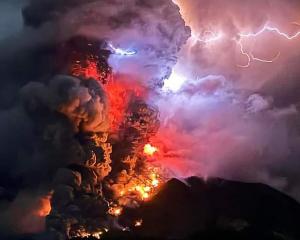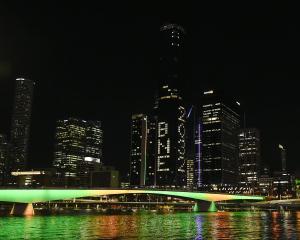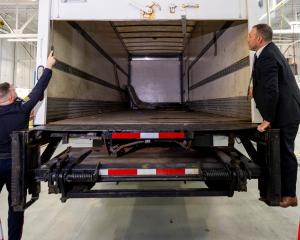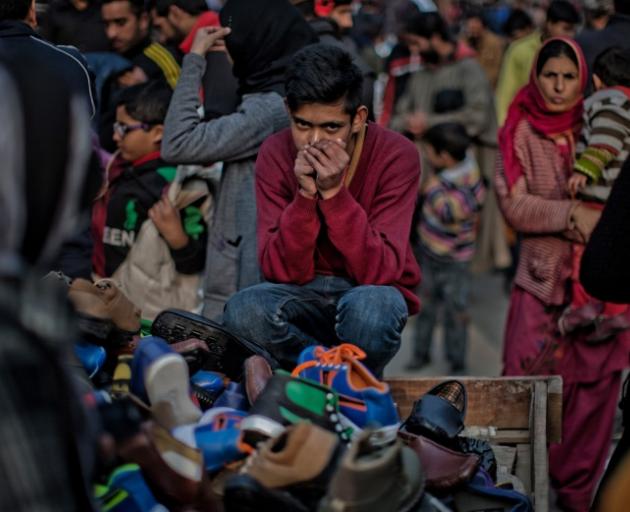
The index, by Australia-based human rights group Walk Free Foundation, increased its estimate of people born into servitude, trafficked for sex work, or trapped in debt bondage or forced labour to 45.8 million from 35.8 million in 2014.
Andrew Forrest, founder of Walk Free, said the rise of nearly 30% was due to better data collection, although he feared the situation was getting worse with global displacement and migration increasing vulnerability to all forms of slavery.
Incidences of slavery were found in all 167 countries in the index, with India home to the largest total number with an estimated 18.4 million slaves among its 1.3 billion population.
But North Korea ranked as worst in terms of concentration with one in every 20 people - or 4.4% of its 25 million population - in slavery and its government doing the least to end this with reports of state-sanctioned forced labour.
"We need to make it clear we're not going to tolerate slavery and when there is slavery in a regime we should not trade with them," Forrest, an Australian mining billionaire and philanthropist, told the Thomson Reuters Foundation.
"If North Korea objects - and I am sure they will - then I am happy to go there and survey the country and very happy to change the number if we are proved to be wrong."
NUMBERS CRITICISED
Forrest acknowledged the latest data was likely to attract criticism with some researchers accusing the index of flawed methodology by extrapolating on-the-ground surveys in some countries to estimate numbers for other nations.
The 2016 index was based on interviews with about 42,000 people by pollster Gallup in 53 languages in 25 countries.
The data for North Korea, for example, that found there were 1.1 million people there in slavery, was compiled through extrapolation, testimony from North Korean refugees and information gathered during three country visits by Walk Free.
But Forrest said a lack of hard data on slavery in the past had held back efforts to tackle this hidden crime and it was important to draw a "sand in the line" measurement to drive action. He challenged critics to produce an alternative.
The United Nation's International Labour Organization estimates 21 million people globally are victims of forced labour but this does not take into account all forms of slavery.
"Without measurement you don't have effective management and there's no way to lead the world away from slavery," he said.
"We want this index to be a call to action. I have not yet seen the government or the business reaction that we need to drive down slavery although it is on its way," said Forrest, adding he had made efforts to ensure the supply chain of his mining company Fortescue Metals Group was slave free.
Forrest said the Global Slavery Index aims to measure the prevalence of slavery in the 167 most populous countries as well as the level of vulnerability of people to enslavement and strength of government efforts to combat this.
The 2016 index again found Asia, which provides low-skilled labour in global supply chains producing clothing, food and technology, accounted for two-thirds of the people in slavery.
About 58% of people living in slavery are in five countries - India, China, Pakistan, Bangladesh and Uzbekistan.
However, the countries with the highest proportion of their population enslaved were North Korea, Uzbekistan, Cambodia, India and Qatar.
The governments taking the least action to tackle slavery were listed as North Korea, Iran, Eritrea, Equatorial Guinea, and Hong Kong.
By contrast, the governments taking most action were the Netherlands, the United States, Britain, Sweden and Australia.
While Europe has the lowest regional prevalence of slavery, Walk Free said it was a source and destination for forced labour and sexual exploitation. The impact of a mass influx of migrants and refugees fleeing conflicts and poverty has yet to be seen.
Forrest said India, while it had the highest number of slaves, deserved credit for starting to address this although surveys suggested domestic work, construction, farming, manual labour and the sex industry were still sectors of concern.
Forrest called on governments and companies to take action.
"This is not AIDS or malaria. We have caused slavery and because it's a human condition we can fix it," he said.
What is modern slavery?
While there is no globally agreed definition of modern slavery, some of the key elements are defined below. Many forms of slavery involve more than one of these elements.
BONDED LABOUR: People become bonded labourers after falling into debt and being forced to work for free to repay the lender. Many will never pay off their loans, and debt can be passed down through the generations. Bonded labour has existed for hundreds of years and flourishes in South Asia in agriculture, brick kilns, mills and factories.
DESCENT-BASED SLAVERY: When people are born into slavery because their families belong to a class or caste of "slaves" in countries that have strict hierarchical social structures.
FORCED LABOUR: When people are forced to work, usually for no or inadequate payment, as a result of violence or intimidation. Many find themselves trapped, often in a foreign country, with their passports confiscated by employers, and unable to leave.
EARLY AND FORCED MARRIAGE: When children, usually girls, under 18 years old are married without their consent and forced into sexual and domestic servitude.
HUMAN TRAFFICKING: This happens when men, women and children are exploited through the use of violence, deception or coercion and forced to work against their will. A key difference from people smuggling is that trafficking is done for the purpose of exploitation. People can be trafficked for many different forms of exploitation such as forced prostitution, forced labour, forced begging, forced criminality, domestic servitude, forced marriage and forced organ removal.
ORGAN TRAFFICKING: Organ removal, while not as prevalent as sex or labour trafficking, is part of a thriving black market run by criminal gangs. It is included in the U.N. Trafficking in Persons Protocol as an exploitative practice.
Sources: ILO (http://www.ilo.org/), Walk Free Foundation (http://www.walkfreefoundation.org), Free the Slaves (http://www.freetheslaves.net/), Anti-Trafficking Review (http://www.antitraffickingreview.org/index.php/atrjournal)
- Thompson Reuters Foundation




